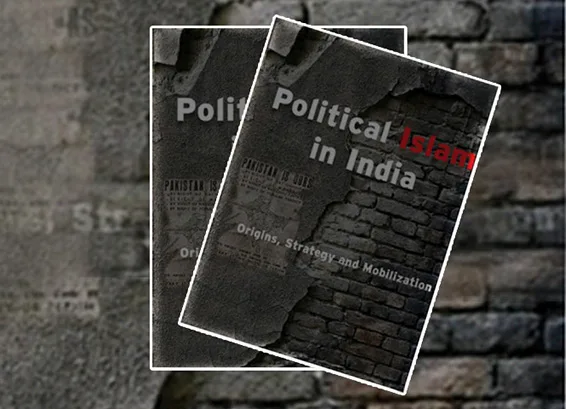The great scholar, academician and author, Prof SV Seshagiri Rao brings out this seminal volume on Islamic politics in India titled Political Islam In India: Origins, Strategy And Mobilization, which depicts dispassionately and clinically all the facts pertaining to the tumultuous decades of late 19th and 20th centuries’ British India.
In this comprehensive work, Prof Seshagiri Rao explains the very origins, strategies and methods employed by political Islam in India not only for the capture of political power, but also in establishing the street- power in terms of unleashing violence on the streets. The work’s detailed focus starts from the mid-19th century, especially the Aligarh phenomenon, the interplay of Muslim politics from Curzon’s partition of Bengal, the communal electorate, the Khilafat, and the power-play with the Congress party. This 450-page book details the biggest holocaust of the 20th century – the Hindu genocide, and Muslim League’s hegemonic power, the tumultuous events leading to the tragic Partition, and the impunity with which Pakistan created the Jammu & Kashmir conflict. Throughout, this book speaks about how British India officers were closed to Muslim League, the perfidy of Mountbatten and the inept Congress party are exposed.
The chapters like ‘Pakistan Resolution’, ‘Islamists Finest Hour’, ‘The Volcano Erupts’, ‘Political Islam Triumphs’ of this book reveal the horrors of Partition in detailed account. The massacres of millions of Hindus and Sikhs, rapes and abduction of women, and girls and converting them into sex slaves. In numerous cases, women either opted for voluntary suicide or were killed by their family members to save them from rapes and abductions from Muslim gangs. The passenger trains destined to Amritsar were filled with dead bodies of Hindus. The stories of rampant looting and killing of Hindus awaiting for trains at any big or small railway stations on the Pakistani side were horrific. The author meticulously mentions the records of those massive killings. The temporary shelter camps on the roads, on the river bridges, and the trains filled with dead bodies and blood-stained coaches reveal the barbarism unleashed by Islamic forces. The migration of people on foot and bullock carts, where only a minor fraction reached Eastern Punjab or the Indian borders, makes for harrowing and heart-wrenching reading. One of the world’s largest migrations of people was witnessed, in this the Hindus were abandoned and thrown to vultures by British officers who were supposed to provide protection. The safe journey of British officers and their families, in stark contrast to the trains filled with dead bodies, reveals how the colonial forces surrendered to political Islamic forces who were designers of Partition.
The book illustrates how `minority politics’ played out to such an extent in India. Hindus of India will rue forever on how and why they supported the Congress party which played its divisive agenda against the nation and Hindus
The Baluch military regiment of the Pakistan Army and the Pathan raiders mauled, raped, abducted, maimed, buried, and burned alive Hindus and Sikhs in lakhs. The following points are illustrative to get an idea of the scale of violence perpetrated. About one-third of the Army was made up of Muslim soldiers who deserted Kashmir units and joined the Muslim marauders from Pakistan. Col Hari Singh was killed by Muslim soldiers of his regiment while he was sleeping. Col. Rajinder Singh, Col. Ranjit Rai, and Major Somnath Sharma were martyred on the battlefield to save Srinagar. Hundreds of Swayamsevaks belonging to Rashtriya Swayamsevak Sangh (RSS) sacrificed their lives while helping fellows move to safer zones or board Amritsar-bound trains. In towns like Rajaouri, Hindus were killed by fellow Muslims, not by the Pakistani military. The jihadi state of Pakistan, supported by the jihadi police and British military officers, perpetrated inhuman massacres and violence at this gigantic scale, and which has no parallel in history, has been described in detail in the chapter Holocaust’.
The book clearly shows the voting patterns of Congress and the Muslim League in all elections held in the provinces, which ultimately went to Pakistan, both East and West. The book also clearly establishes how less than a quarter of the Muslim population, got more than 30 per cent of the share of land and other resources, 33 per cent of the military resources with enriched military establishments in Rawalpindi, Peshawar etc, and even more importantly the fertile and mighty Sindhu river and its tributaries.
This thought-provoking book also raises an argument about how the Muslim League always propagated that it was not a minority, but a nation, and their continuous efforts to have a separate nation due to political Islam. It illustrates how `minority politics’ played out to such an extent in India. Hindus of India will rue forever on how and why they supported the Congress party which played their divisive agenda against the nation and Hindus.
The readers may find the genocide of Hindus and Sikhs during pre and post-Partition and carefully erasing these historical chapters of horror out of public memory by the Govt in power for decades with the willing acquiescence of the media was unpardonable.
The generation of Indians who were adults in the 1950s-1960s in the North may have known about the massacres by political Islam. It is a shame that the Hindu-Sikh genocide has been ignored by successive Indian governments and the people. It can be understood that the descendants of the massacred, would have undergone unspeakable shock and trauma and wouldn’t speak about the genocide, but it doesn’t speak much about the people in the rest of the country.



















Comments